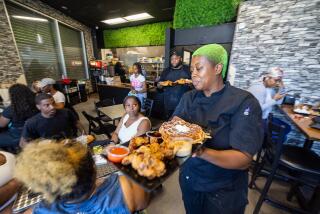Nearly one-third of U.S. homeowners have no mortgage
- Share via
What mortgage meltdown?
While millions of Americans have suffered the angst of lost homes, equity and pride, nearly a third of the nation’s homeowners have no mortgage at all, according to an estimate released Thursday by real estate website Zillow.
The free-and-clear class includes, predictably, retirees who have chipped away at their debts for decades, but also a surprisingly high percentage of young people and those who live in relatively affordable regions. In Los Angeles and Orange counties, only 20.7% of homeowners owned their properties outright, reflecting the region’s pricey real estate.
Economists and housing analysts said that Zillow’s estimates are in line with historical norms. But the proportion of these owners is likely to grow as the nation’s baby boomers reach retirement. The fact that they can pay cash when they move will make them increasingly important players in a recovering housing market.
“Those are the people who have the greatest flexibility,” said Svenja Gudell, a senior economist with Zillow.
As the economy picks up, regions with high percentages of free-and-clear owners probably will get a boost.
“That means there is a lot more disposable income,” said Celia Chen, a housing economist with Moody’s Economy.com. “That is positive for the local economy.”
Out of the nation’s largest metro areas, Pittsburgh, Tampa, New York, Cleveland and Miami had the highest percentages of mortgage-free homeowners. Washington, Atlanta, Las Vegas, Denver and Charlotte, N.C., had the lowest.
Throughout the Southland, the percentage of mortgage-free homeowners varied little by county. San Bernardino had the lowest percentage of free-and-clear homeowners, at 19.7%, and San Diego had the highest, at 21.5%. That compares with 29.3% nationally — or nearly 21 million homeowners.
A big factor in regional variation is median home values, with lower-priced areas not surprisingly having higher outright ownership rates.
Zillow also found that the nation’s most elderly were the most likely to own their homes, with 77.6% of those 85 and older owning their homes outright, followed by those ages 74 to 84, at about 62.7%. One outlier was those homeowners ages 20 to 24. Out of that relatively young demographic, about 34.5% owned their homes outright. These homeowners could be young millionaires, those with trust funds or those who received help from their parents.
People who own their homes outright have always been a significant part of the housing market, said Guy Cecala, publisher of Inside Mortgage Finance. But the recent financial crisis may drive more people toward the financial security of having no house note.
“Clearly that is going to be a growing trend as our population ages,” Cecala said. “The credit crisis has pushed more and more people to think that the best way they can prepare for retirement is with no mortgage at all.”
Delia Fernandez, a certified financial planner in Los Alamitos, said that even with interest rates so low, those seeking her guidance for retirement often want to pay off debts. And that makes sense, particularly for those nearing retirement.
“The financial argument has always been to borrow other people’s money and invest the rest,” she said. But “that higher rate of return is not always guaranteed.… In the meantime, as you get closer and closer to retirement, people want to take on less and less risk.”
Victor Robinette, a certified financial planner with Raymond James Financial Services Inc. in South Pasadena, said customers have been asking him more often these days about paying off the mortgage.
“During the boom days, and before, there was hardly any interest in paying off debt because people were so confident that the value of their home was going to go up,” Robinette said. “Nowadays, after four or five years of being bruised, people really appreciate the comfort of having the house paid off. And so many people still have concerns about possibly losing their livelihood.”
More to Read
Sign up for Essential California
The most important California stories and recommendations in your inbox every morning.
You may occasionally receive promotional content from the Los Angeles Times.






